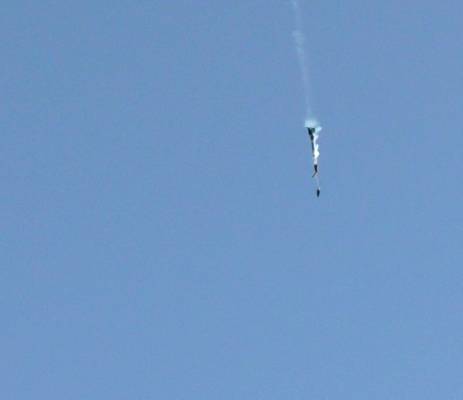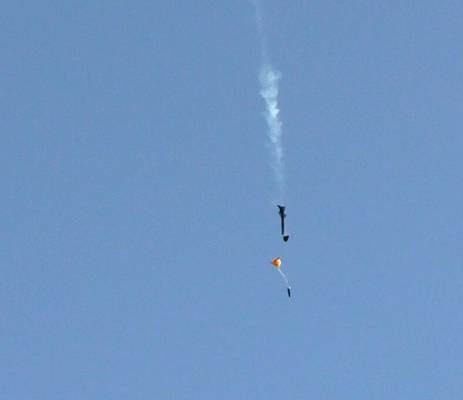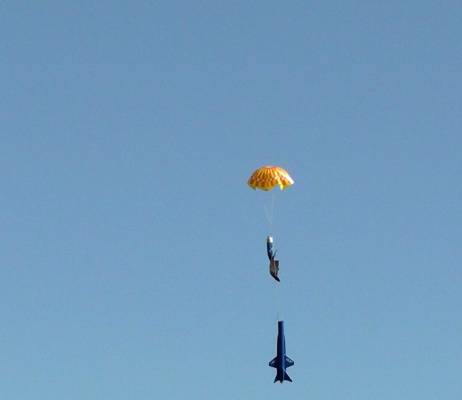The X-15: This is a "Sport-Scale" (not true scale) model of the famous X-15 rocket-powered research plane. This particular kit appears to be newer than other Quest X-15 kits described here: It is a few inches longer, and a recommendation by Quest to only use the A8-3 or A6 motors. (Mine is definitely too heavy to fly on an A8). I chose to paint my particular model gloss blue (not the historically accurate black).
My kit came out pretty heavy as I used a full-sized can of Rustoleum 2X paint trying to get a smooth, glossy finish. Apparently light coats of this paint leave the finish in something like an orange-peel texture, cool but not good for low drag. I discovered heavy, thick coats that would run with normal paints made for a smoother, glossy finish. But by then, there was so much primer and paint on this model that it almost doubled the weight of this kit. In MHO, Rustoleum 2X (from Home Depot) sucks for flying models. I wish I would have used the ridiculously expensive yet lighter Testors stuff at $5 for a tiny 3-oz. can.
The X-15 finally got a payload section addition. This adds another 3 inches to the rockets overall length. This will hold the Altimeter Two, which no longer is at risk of ejection shock damage or loss if the clip fails. The added bulkhead, painted payload tube and padding only adds an additional 13.6 grams of weight to this model.
She flies well and is not affected by the wind much, though I wish I could get her to venture a little closer to the clouds. Actual measurements with an altimeter on board shows this model can go much higher than I estimated, with a C6-3 it reached 437 feet, and traveled at 89 mph. That's enough to have it fly higher than the Great Pyramid of Giza, now that it has eroded about 25 feet.
| Flight Date: | 2013-08-04 |
| Rocket Name: | X-15 |
| Kit Name: | Quest - X-15 {Kit} (2014) |
| Flyer's Name: | Rich DeAngelis |
| Motors: | B6-4 |
| Expected Altitude: | 149 Feet |
| Wind Speed: | 10.00 mph |
| Launch Site: | Exton Park, Exton PA |
| Actual Altitude: | 99 Feet |
I was trying out a new field today. Of all the rockets that still needed a test flight, the X-15 was predicted to be the lowest. I wanted to try a lower-power test flight with the new altimeter in the nosecone. Though it was windy, I wasn’t worried about the X-15 since it is a wind-fighter and I expected it to go less than 150 feet up.
The motor lit fine, and the rocket blasted off its 4-foot launch rod. It peaked its acceleration at 8 Gs while averaging 3 Gs for the 8/10 second burn. It began to turn into the stiff breeze about 30 degrees or so.
The rocket reached a speed of 50 mph and then slowed as it coasted for 2.1 seconds where it then turned completely into the wind. The apogee of this flight was 99 feet. After apogee it delayed for another 1.2 seconds while dropping 17 feet.
The ejection fired a bit early after only a 3.3 second delay. At 82 feet up the parachute opened almost immediately, and the rocket descended at 9 mph to a soft grass landing. The total flight time was only 10 seconds.
Although this flight was fine, it demonstrated that it was too windy to fly other, higher-reaching flights today, so all future missions were scrubbed for the day.
| Stage | Motor(s) |
|---|---|
| 1 | Estes B6-4 |
 |
 |





